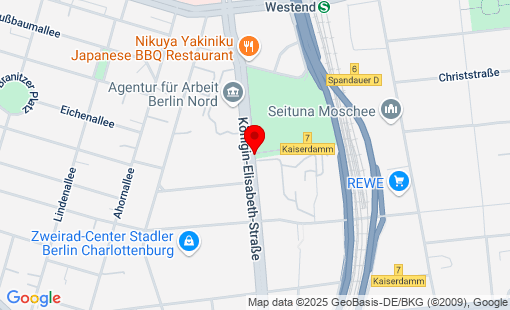Germany
Berlin-Charlottenburg, Luisen-Friedhof II
Total Occupation: 234 fatalities
Total Occupation: 234 fatalities
Luisen-Friedhof II, one of the smallest of the Charlottenburg churchyards, was put into use under this name in 1867. It was laid out outside inhabited areas, on a sand pit site close to the former cholera cemetery; this had been laid out in the "Sandgruben am Spandauer Berg" during the cholera epidemic of 1831. After another cholera epidemic in 1866, this cemetery was converted into a permanent cemetery: The inauguration of Luisen Cemetery II took place on May 27, 1867. The layout of the graves follows the traditional rectangular pattern: this avenue-quarter cemetery has an area of 47,710 m². Native plants, especially maples, were chosen for the trees. The grounds include a chapel, which was built in 1868 by master mason Rudolg Zeitler. It was restored between 1993 and 1995. As part of the plans for the National Socialists' "World Capital of Germania", the cemetery was to lose areas; these plans were no longer implemented, unlike other cemeteries in Berlin. The original entrances, which were located on the eastern side, in the extension of today's Seelingstraße and then on Spandauer Chaussee (today Spandauer Damm), were relocated in the course of the Ringbahn construction. Further land was ceded in the 1960s: Königin-Elisabeth-Straße on the western side of the cemetery was widened by 14 meters, while the construction of the city freeway trimmed the cemetery in the east and robbed it of some particularly impressive mausoleums. One of the special features of the cemetery was the former 2,500 m² private resting place of the Schaeffer-Voit family. Only a pillar and a memorial stone in the south-eastern corner of the churchyard still remind us of the former owners of Schloss Ruhwald, who made a fortune with the fashion magazine "Der Bazar". Many of Westend's long-established families are buried in this churchyard. Numerous military men (Karl Friedrich von der Goltz, Leopold Heinrich von der Goltz, v. Lobenthal, v. Heineccius) from Charlottenburg's villa district can also be found in the row of hereditary burials laid out for a period of 60 years. War graves with dead from both world wars are laid out on the far edge near the A100 freeway, together with a small memorial with a helmet, binoculars and laurel wreaths. 234 war dead rest here.
